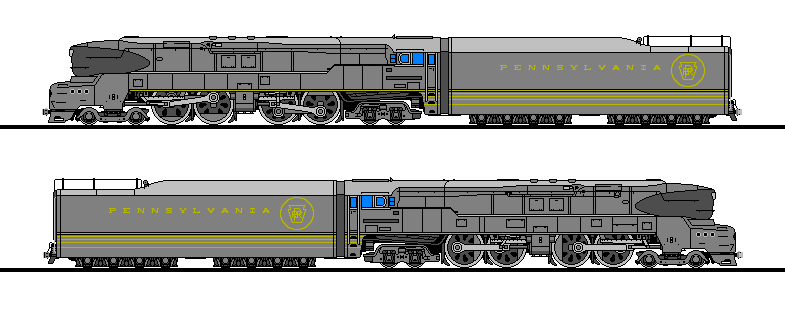HOME | DD
 Sampug394 — Coal and Iron
Sampug394 — Coal and Iron

#1850 #camel #coal #locomotive #pixel #steam #train #winans #sampug394
Published: 2015-11-02 20:12:55 +0000 UTC; Views: 2764; Favourites: 39; Downloads: 20
Redirect to original
Description
In a late summer sometime in 1858, Baltimore & Ohio Camel 0-8-0 #105, a product of the then Gillingham & Winans Locomotive foundry, rumbles along at a brisk twelve miles per hour on a flat stretch of track, with just over forty iron pot hoppers fully laden with anthracite rattling and screeching in tow. The brakeman eyes his surroundings, while the engineer keeps a stern eye on the approaching grade, knowing full well what the monster machine he rides astride is capable of.At the time, Winans camels were an unusual semi-standard design for freight power, with somewhere around 250 built in the United States, (Apparently dozens more were built for an imperial railway in Russia, fun fact for you, Atticus-W . ) mostly for the Baltimore & Ohio railroad (Winan's largest customer) owning over one hundred itself. Lacking lead wheels at Mr. Winan's vehement lawsuit-blasting request, and having a cab astride the boiler, the locomotives sported a massive firebox, with the tender and related decking and railings designed around it, totaling up to over 25-30 tons of camelback-style motive power.
At first ungainly, the 0-8-0 camels become acceptable when their reliability and service life come into the equation, logging literally several million service miles, with only two known catastrophic failures. The locomotives, like the iron pot hoppers they hauled, lasted well into the late end of the 19th century, serving as a worthy testament to often ignored mid 1800s engineering.
Considering the different paint schemes of the B&O through the 1800s, I've seen black, dark red, dark green, and even a wild lime green offered as a reference. Given the surviving Camel 4-6-0 at the B&O museum has a nice dark red with mustard yellow striping and lettering, I felt this scheme was appropriate for the camels as well, regardless of their duty as freight engines. Industrial art GET.
Related content
Comments: 7

What two catastrophic failures? Never heard of those and was just curious.
👍: 0 ⏩: 1

One for sure was a cylinder failure, don't readily remember the other.
👍: 0 ⏩: 1

bet it was a boiler explosion or fire box failure
👍: 0 ⏩: 0

No repeating car numbers here! The small size of these sprites and the simple
shading really gives them their SNES- or Gameboy-esque videogame-style vibe,
and I like that a lot. It’s hard not to
respect such an interesting and unique choice of prototype, too. My only suggestion might be that the loco
would look good with its black paint a bit darker, like the hoppers, to make
the detail stand out a bit more— or, alternatively, the dark red cab paint
could be duller, to make the engine look all-around weathered. Maybe— both versions? =3 (I also still think
you need to throw in some of those alternate coal hopper designs— I can get
some references for you if you’d like. =3 )
👍: 0 ⏩: 0

They were an interesting sort, although the fireman would have quite a time keeping steam pressure up during heavy rain.
👍: 0 ⏩: 0


























